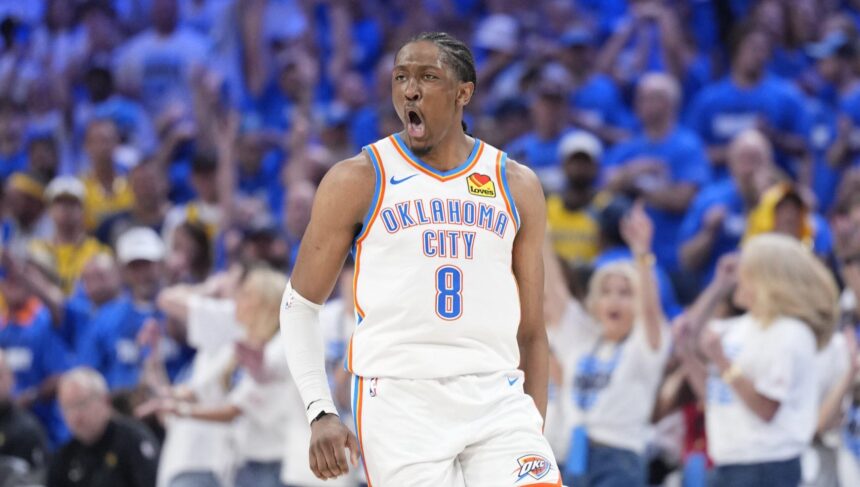The Oklahoma City Thunder have become a prominent fixture in the NBA landscape since their relocation in 2008, showcasing a blend of young talent and experienced leadership. As fans and analysts look back on the franchise’s journey, a key point of interest remains the team’s success in the NBA Finals. This article examines the Thunder’s history of championship appearances and clarifies how many titles the Oklahoma City team has secured to date.
Thunder NBA Finals Appearances and Team Performance Over the Years
The Oklahoma City Thunder, a relatively young franchise born out of the Seattle SuperSonics’ relocation in 2008, have carved out a significant presence in the NBA despite only a handful of Finals appearances. Since the move to Oklahoma City, the team has reached the NBA Finals once, in 2012, showcasing their potential with stars like Kevin Durant, Russell Westbrook, and James Harden leading the charge. That year, they faced the Miami Heat in a hard-fought series that ultimately ended in a 4-1 defeat, marking a milestone but falling short of championship glory.
Beyond their sole Finals run, the Thunder have consistently been competitive, making multiple deep playoff pushes over the last decade. Some key aspects of their performance over the years include:
- Consistent playoff appearances between 2010 and 2016 under coach Scott Brooks.
- A transition period post-2016 involving a rebuild centered around young talents like Shai Gilgeous-Alexander.
- Maintaining a strong home-court advantage at the Chesapeake Energy Arena during their peak seasons.
| Season | Playoff Result | Key Player(s) |
|---|---|---|
| 2011-12 | NBA Finals Runner-up | Durant, Westbrook, Harden |
| 2013-14 | Conference Finals | Durant, Westbrook |
| 2016-17 | First Round Exit | Westbrook |
| 2022-23 | Playoffs First Round | Gilgeous-Alexander |
Key Factors Behind the Oklahoma City Franchise’s Championship Challenges
Despite the Oklahoma City Thunder’s consistent playoff appearances and periods of dominance, the franchise has struggled to transform regular season success into an NBA championship. One crucial factor has been the challenging transitions in roster stability, particularly the departure of foundational stars like Kevin Durant and Russell Westbrook. These changes disrupted team chemistry and forced frequent roster rebuilds, which made it difficult to sustain the elite level of play necessary for deep postseason runs. Additionally, the team often encountered powerhouse opponents in the Western Conference Finals, facing legacy franchises with deeper benches and more championship experience.
Other core challenges that have hindered their title ambitions include:
- Injuries: Key players missing critical playoff games at pivotal moments.
- Defensive Inconsistencies: Occasional lapses that have allowed opposing teams to capitalize.
- Salary Cap Constraints: Limiting the ability to sign top-tier free agents to complement their core.
- Lack of Experienced Leadership: Post-superstar transitions left gaps in veteran presence.
| Factor | Impact on Championship Quest |
|---|---|
| Roster Turnover | High – Disrupted team continuity |
| Playoff Injuries | Moderate – Limited key player availability |
| Competition Level | High – Faced elite Western Conference teams |
| Financial Limitations | Moderate – Restricted player acquisitions |
Recommendations for Building a Championship-Caliber Team Moving Forward
To forge a team capable of returning to the NBA Finals and capturing a championship, the Thunder must emphasize long-term player development and strategic roster management. Investing in young talent through the draft while pairing them with seasoned veterans creates a balanced dynamic essential for playoff success. The front office should prioritize acquiring versatile players who can adapt to multiple roles, enhancing both offensive creativity and defensive resilience.
Equally important is fostering a culture centered on cohesion and resilience. This can be achieved by:
- Implementing rigorous, team-oriented training programs
- Encouraging open communication among coaching staff and players
- Utilizing advanced analytics to identify areas of improvement
- Maintaining flexibility in salary cap management to enable mid-season adjustments
| Key Focus | Strategy | ||||||||||
|---|---|---|---|---|---|---|---|---|---|---|---|
| Talent Acquisition | Target skilled, versatile rookies and proven veterans | ||||||||||
| Team Culture | Prioritize cohesion, resilience, and leadership development | ||||||||||
| Analytics Use | Leverage data to identify strengths and address weaknesses | ||||||||||
| Salary Strategy | Maintain cap flexibility for It looks like your table was cut off at the last row. Here’s a completed version based on the content and structure you have so far:
If you’d like, I can also help you format or summarize the content further! Wrapping UpIn summary, while the Oklahoma City Thunder have established themselves as a competitive force in the NBA since relocating from Seattle, their quest for an NBA championship remains unfulfilled. Despite reaching the Finals once in 2012, the team has yet to capture the league’s ultimate prize. As the Thunder continue to develop their roster and build for the future, fans will be watching closely to see if the franchise can add a championship banner to its history. |














